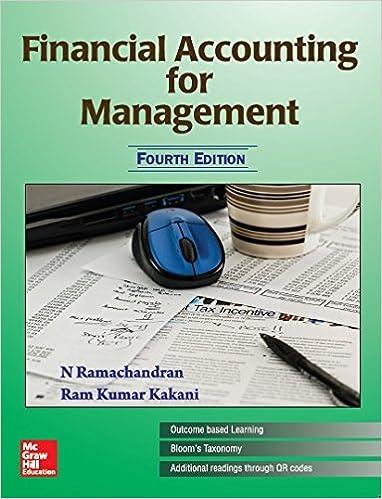Niti founded M/s Khilona & Khilona, a toy retail shop, and invested 2,80,000 in the business as
Question:
Niti founded M/s Khilona & Khilona, a toy retail shop, and invested ₹2,80,000 in the business as equity shares. At the beginning of the year, she borrowed ₹1,50,000 from the local bank, to be paid in five years, bearing an interest rate of 10% payable annually. She was now ready to rent a store, buy a godown and inventory, and begin selling toys.
She signed a two-year lease for a store in Chowpati beach, paying the full amount of ₹1,24,000, in advance. During the year, she bought on credit, toys and stuffed animals at a cost of ₹1,00,000 for resale in her store. The toy inventory was stored in a new warehouse that she purchased for cash at the beginning of the year, at a cost of ₹80,000. The warehouse had an estimated useful life of 10 years and no salvage value.
By the end of the year, she paid in cash, for 50 percent of the inventory purchases she had made on credit. After making this payment, the store had a cash balance of ₹86,000. By the end of the year, she sold inventory that cost ₹75,000 for ₹1,80,000. Seventy per cent of the customers paid in cash and the remaining 30% were extended credit. During the year, she paid ₹15,000 for electricity. The last telephone bill for ₹1,200 was received but not paid by the end of the year. She had to prepare the trial balance, profit and loss account, and balance sheet for the firm.
Based on the discussion above, please answer the following multiple-choice questions:
1. If gross profit were defined as sales less cost of goods sold and if gross margins were defined as gross profit-to-sales ratio, then we can state that the gross margins of M/s Khilona & Khilona were:
(a) Negative
(b) Positive, less than 50%
(c) Positive, more than 50%
(d) Insufficient information
2. Ignoring taxes, the net income of the firm was:
(a) Negative
(b) Positive, less than ₹50,000
(c) Positive, more than ₹50,000
(d) Insufficient information
3. The biggest constituent of assets seems to be:
(a) Fixed Assets
(b) Other Assets
(c) Non-Cash Current Assets
(d) None of the above
4. The firm can pay a maximum dividend of
(a) 16.9%
(b) 26.9%
(c) 36.9%
(d) None of the above
5. If ₹14,000 worth of Accounts Receivables were found to be bad debts and were to be provided for, then:
(a) Accounts Receivable = Accounts Payable
(b) Accounts Receivable + Prepaid Rent = Accounts Payable
(c) Accounts Receivable + Prepaid Rent + Inventory = Accounts Payable
(d) None of the above
Step by Step Answer:

Financial Accounting For Management
ISBN: 9789385965661
4th Edition
Authors: Neelakantan Ramachandran, Ram Kumar Kakani





